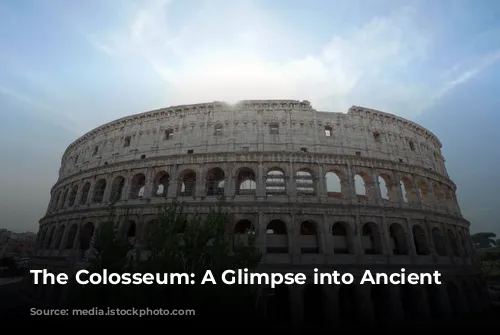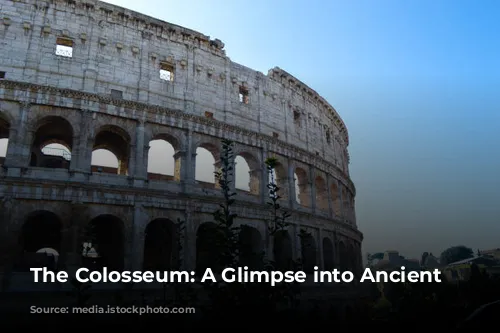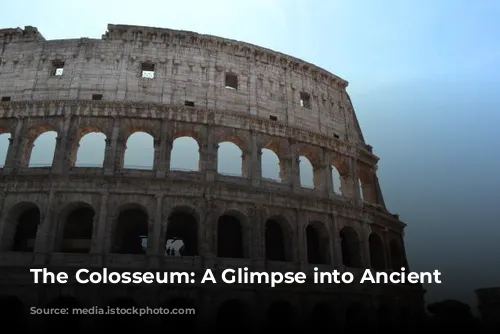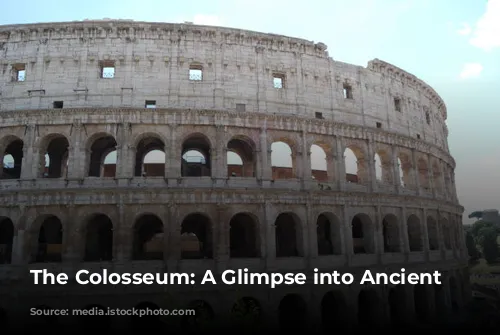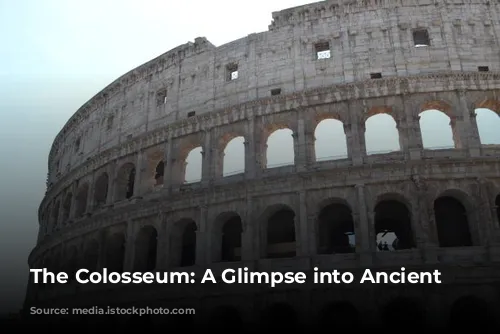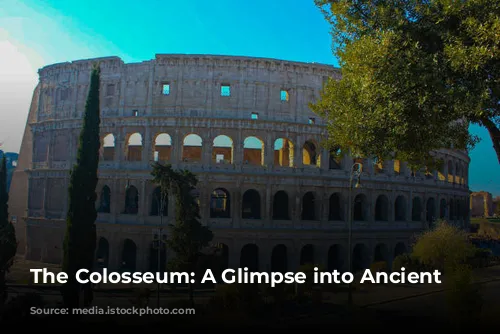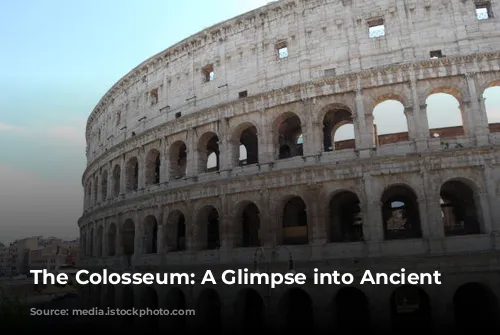The Colosseum, a name synonymous with ancient Rome, stands as a testament to the grandeur of the Roman Empire. Though officially known as the Flavian Amphitheatre, its iconic nickname reflects its imposing size and enduring legacy. Emperor Vespasian initiated its construction, and his son, Titus, proudly unveiled it to the world in 80 AD.
A Spectacle of Grandeur
The Colosseum’s opening ceremony, a spectacle lasting an astonishing one hundred days, was a testament to the opulence of Roman society. The crowd witnessed thrilling gladiatorial combats, mesmerizing animal hunts, and awe-inspiring naumachiae: mock naval battles that re-enacted legendary historical clashes. These events, featuring thousands of animals, offered a glimpse into the sheer scale of Roman entertainment.
The Origin of a Name
But why is it called the Colosseum? This name first appeared in a cryptic prophecy by the Venerable Bede, a medieval monk: “Rome will exist as long as the Colosseum does; when the Colosseum falls so will Rome; when Rome falls so will the world.” This prophecy seems to have been inspired by a monumental statue of Emperor Nero, known as the “Colossus”, that once stood near the amphitheatre. This towering structure, reaching an incredible 35 meters in height, was tragically destroyed over time.
A Marvel of Roman Engineering
The Colosseum stands as a symbol of Roman architectural ingenuity. Imagine its pristine white exterior, flawlessly crafted from travertine stone slabs. Its elliptical shape maximized spectator capacity, while its four floors, each adorned with eighty arches, provided a breathtaking view of the arena.
Building a Colossal Structure
It’s hard to believe that this imposing edifice was constructed in less than ten years. The Romans mastered a clever architectural technique: the arch, a structure capable of efficiently distributing the weight of heavy constructions. This principle, evident in iconic Roman structures like aqueducts, served as the foundation of their architectural prowess.
A Legacy of Marble and Lead
Today, we only see a shadow of the Colosseum’s former glory. Sadly, three-fifths of its surrounding brick wall are missing. During the Middle Ages, the Colosseum became a quarry, supplying marble, lead, and iron to ambitious projects like the Barberini Palace, Piazza Venezia, and even St. Peter’s Basilica.
A Seating Chart for the Roman Elite
This monumental structure could accommodate an astounding seventy thousand spectators. Its inclined tiers of seats ensured optimal viewing for everyone, regardless of their position. Entry was free for Roman citizens, but seating was meticulously divided based on social status. The commoners were seated at the top, while the elites, including senators, vestals, priests, and the emperor, occupied the prime seats closest to the arena.
A Roof Over Their Heads
Like modern sports stadiums, the Colosseum provided its audience with sun protection. Its ingenious velarium, an enormous linen tarpaulin, offered shade from the scorching sun. This marvel of engineering required a team of one hundred sailors from the Imperial fleet to maneuver, their movements synchronized with the beat of a drum.
The Gladiators’ Arena
Upon entering the Colosseum, we are immediately confronted with the arena, the stage for thrilling shows. Its former floor, crafted from brick and wood, has long since disappeared. Instead, we now see the cellars, where equipment for the games was stored and prepared.
The Stage for Spectacle
Hidden beneath the arena were lifts and hoists, their rails still visible today. These ingenious devices allowed for the dramatic entrance of gladiators and animals, who burst onto the stage with a burst of white dust, creating a captivating spectacle for the audience. These elaborate systems also hoisted backdrops for the hunting events.
A Symbol of Unity
The Colosseum played a vital role in Roman society. It united citizens and their leaders through shared participation in public events, offering an escape from political anxieties and providing entertainment for the masses.
A Variety of Shows
The Colosseum hosted a diverse array of shows, each with its own unique charm. Venationes, spectacles featuring exotic animals and man-versus-beast battles, enthralled the crowd. Silvae, meticulously crafted scenes depicting forests, showcased the artistry of painters and set designers. Even a writing elephant graced the stage, performing its unusual talent.
The Reign of the Gladiators
The most popular event, however, was undoubtedly the gladiatorial contests. The gladiators, often former prisoners of war or impoverished individuals seeking fame and fortune, entered the arena to the cheers of the crowd, much like modern sports champions. They paid homage to the emperor, saluting with the famous words “Ave Cesare morituri te salutant” (Hail Caesar, those who are about to die salute you).
The Fate of the Gladiator
The gladiators battled with a variety of weapons: nets, tridents, shields, sickles, and javelins. Their fate, decided by the emperor, rested in the hands of the audience, who could cheer for mercy or demand execution. Thumbs up meant life; thumbs down meant death. Winners were rewarded with golden palm leaves and wealth.
A Bloodthirsty Audience
The Roman spectators reveled in the brutality of the shows, a fascination comparable to modern-day “splatter” films. The smell of blood, burnt flesh, and wild animals permeated the arena, a reminder of the raw reality of these events.
From Glory to Ruin
As the Roman Empire declined, the Colosseum fell into disuse. It became a haven for confraternities, hospitals, hermits, and even a cemetery. Over the centuries, it transformed into a quarry, losing much of its original structure.
A Sacred Monument
Threatened with demolition in the 16th century, the Colosseum was saved by Pope Benedict XIV, who declared it a sacred monument dedicated to the Passion of Christ. A cross was placed on a pedestal, symbolizing the suffering of Christian martyrs. It became a place of pilgrimage for Christians and a source of pride for Romans.
A Ghost of the Past
Today, the Colosseum stands as a poignant reminder of Rome’s glorious past. It serves as a testament to the architectural prowess and cultural richness of the Roman Empire. As Charles Dickens wrote, seeing the Colosseum is like “seeing the ghost of old Rome floating over the places its people walk in”.
